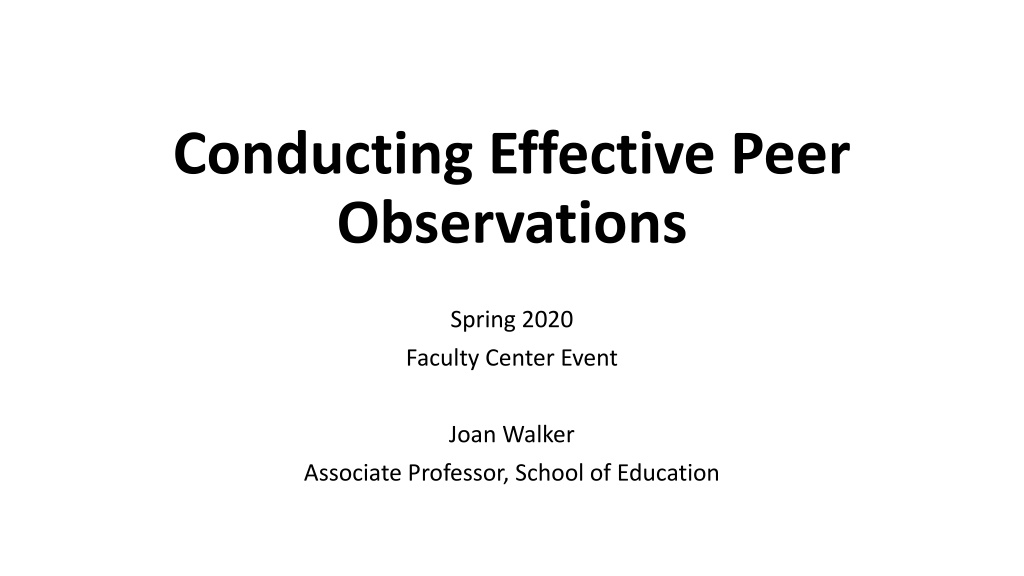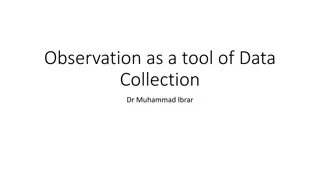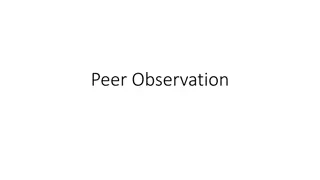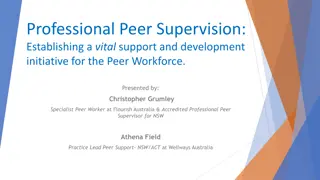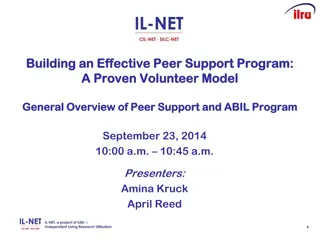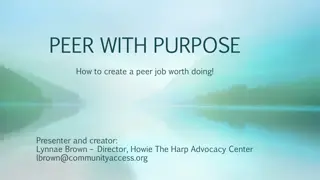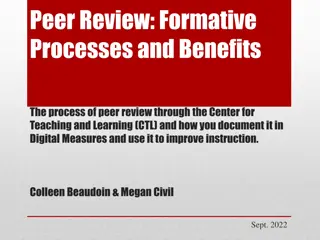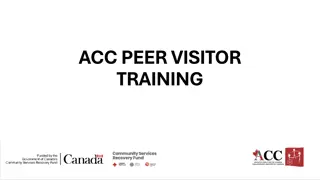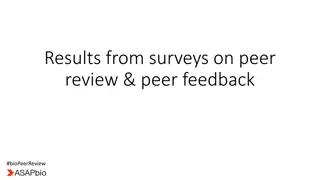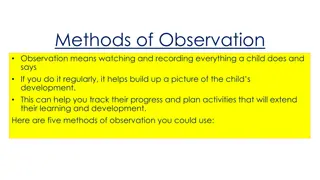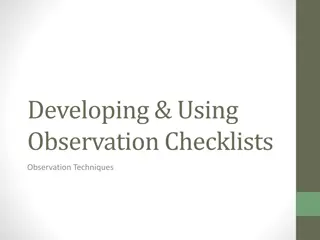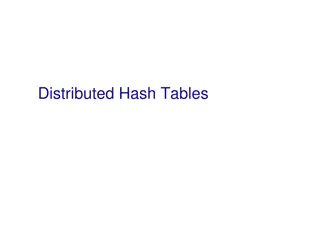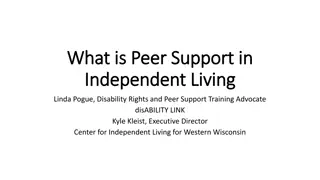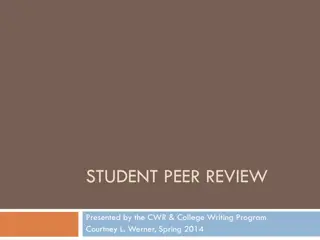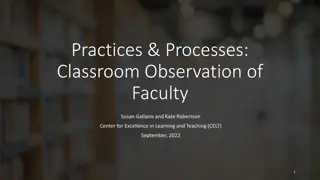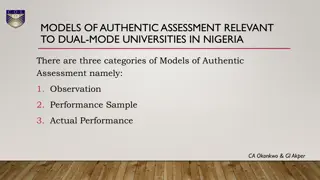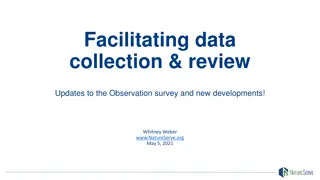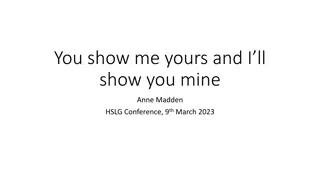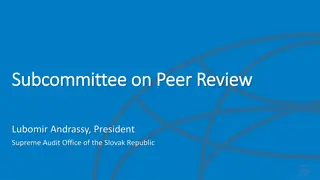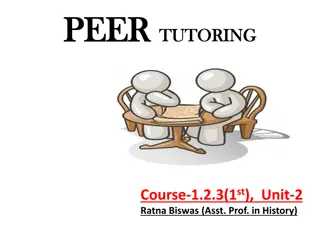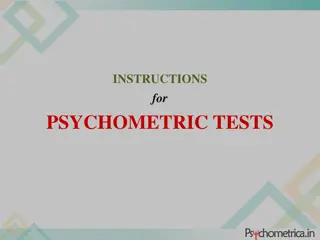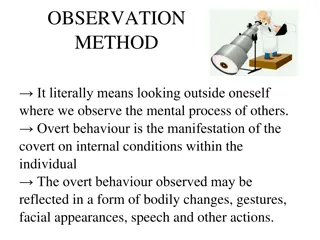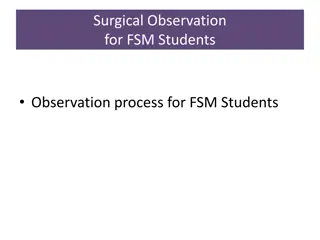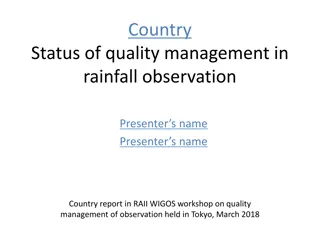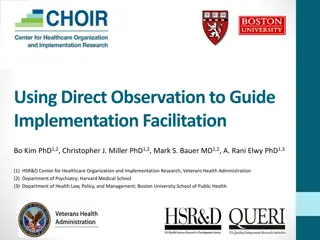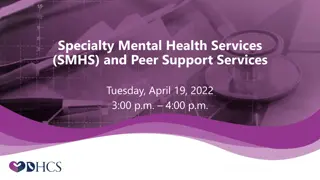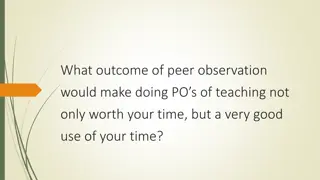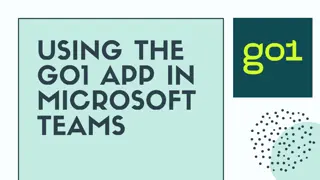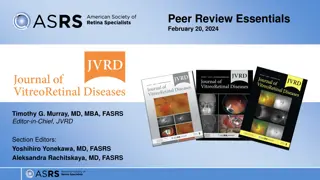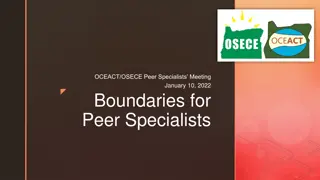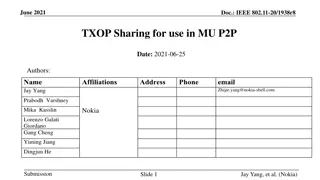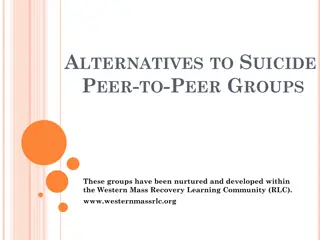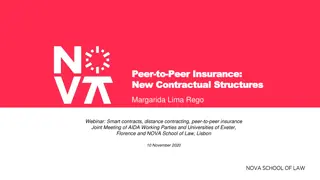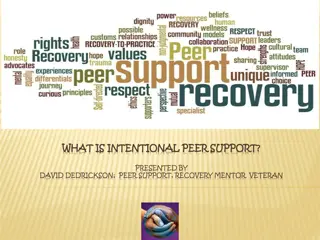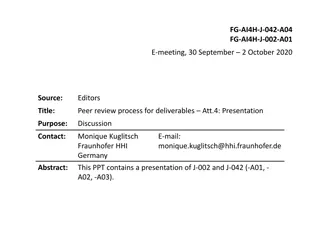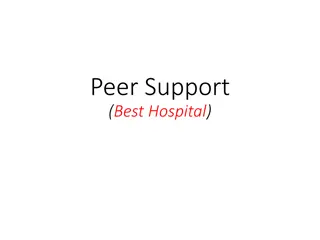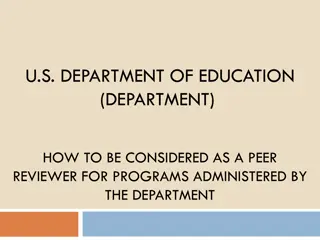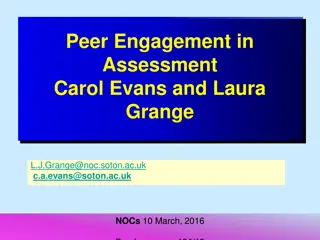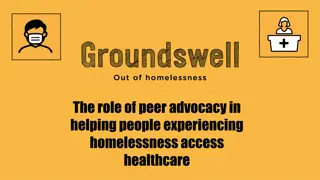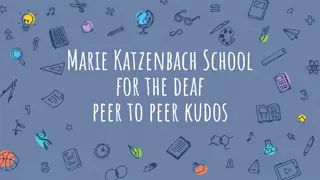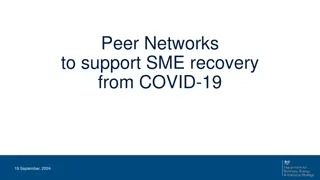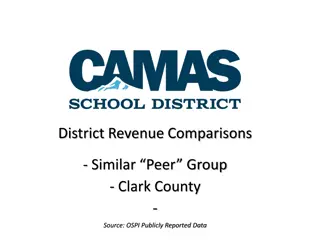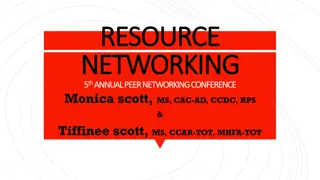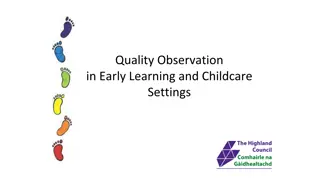Effective Peer Observation Strategies for Professional Development
Explore the significance of peer observation in academia, including reasons for conducting it, challenges involved, and a detailed breakdown of the three phases - Before, During, and After observation. Learn about tools for capturing observations, arranging debriefing sessions, and enhancing teaching effectiveness through structured feedback and mentorship opportunities.
- Peer Observation
- Professional Development
- Teaching Effectiveness
- Academic Mentoring
- Faculty Enhancement
Download Presentation

Please find below an Image/Link to download the presentation.
The content on the website is provided AS IS for your information and personal use only. It may not be sold, licensed, or shared on other websites without obtaining consent from the author. Download presentation by click this link. If you encounter any issues during the download, it is possible that the publisher has removed the file from their server.
E N D
Presentation Transcript
Conducting Effective Peer Observations Spring 2020 Faculty Center Event Joan Walker Associate Professor, School of Education
Why Peer Observation? Extrinsic Intrinsic Job requirement Annual review process Documentation of teaching effectiveness Desire to improve one s teaching Desire to serve and mentor Additional data point for interpreting student evaluations
Challenges and Questions about Peer Observation? Observer Observee
3 Phases of Effective Peer Observation Before During After Inviting / Suggesting an Observation Tools for Capturing What is Observed Debriefing the Observation Purpose Field notes Goals Diagrams Creating a Formal Observation Summary Syllabus Rubrics Scheduling Checklists
BEFORE: Inviting / Suggesting an Observation Purpose, Roles and Process Why is the observation being conducted? Is the observation confidential or part of someone s teaching dossier or annual review? What will happen during and after the observation? Goals/Outcomes What does each party want to achieve / learn from the experience? Is there anything specific you d like me to pay attention to? Materials Syllabus and course schedule Course overview, learning objectives and key assessments Scheduling ~One hour, mutually convenient Typical class session
3 Phases of Effective Peer Observation Before During After Tools for Capturing What is Observed Debriefing the Observation Arranging an Observation Purpose Field notes Goals Diagrams Creating a Formal Observation Summary Syllabus Rubrics Scheduling Checklists
A Sample of Tools for Capturing the Observation Field notes: Keep a time-stamped running, written record; embed questions and suggestions Diagrams: Capture discourse in 2-D formats Rubrics/Checklists: Easy to use; add narrative that complements categories/criteria
Field Diagram Captures discourse and physical set up T = Teacher F/M = Student gender = Speaking Other symbols cantrack quality of verbal exchanges, e.g., P = Praise statements ? = Question F? = Factual question C? = Conceptual question
Context or Background Information: Describe the setting in which the lesson took place, relevant information about the makeup of the class, and any other descriptive characteristics that would provide appropriate context to the observation. Area 1: Instructor Goals/Intentions 1) clearly stated or portrayed in an obvious fashion 2) appropriate to the focus of the course 3) explicitly connected to the flow of previous or future classes. Area 2: Significance of activities, topics Tasks/activities performed by students or topics discussed: 1) Were relevant to the focus of the course 2) required an appropriate investment of student time or effort Area 4: Examination of student learning 1) questioning students on course material, 2) observing student performance(s), 3) student-student discussion, 4) informal assessment techniques, 5) quizzes, or 6) other methods. Area 3: Student engagement with the subject matter was observable: 1) in appropriate forms such as discussion, listening/processing, performing, reading, reflecting, speaking, or writing. 2) over a substantial portion of the class time 3) by a broad segment of students Overall Rating of Observed Teaching: _________ 1=Highly satisfactory 2=Satisfactory 3=Could use improvement 4=Unsatisfactory
3 Phases of Effective Peer Observation Before During After Tools for Capturing What is Observed Debriefing the Observation Arranging an Observation Purpose Field notes Goals Diagrams Creating a Formal Observation Summary Syllabus Rubrics Scheduling Checklists
AFTER: Debriefing the Observation Observer Observee 1. Remember: It s only a snapshot. 1. Remember: It s only a snapshot. Provide a larger context for your peer. 2. Learning to teach takes time. Avoid defensiveness. Don t be hard on yourself. 3. Selectively set specific, achievable goals for improvement. 4. Implement 1 or 2 goals in your teaching assignment. 2. Share field notes in advance. Use the debrief to confirm accuracy of notes & gather more information. 3. Emphasize the purpose and goals. Focus on learning. 4. Be kind. Start with an open-ended prompt, e.g., How did the class go for you? 5. Identify areas for growth Immediate Longer-term
Writing it Up: A 3-Part Summary / Memo Set the Context: Describe how the observation was arranged and its purpose. E.g., Dr. X asked if I could visit her class to provide a peer observation letter that she could include in her application for tenure. She added that she would like me to look for . The class that I observed was [course title/#], which meets [schedule, e.g., once a week for 3 hours; twice a week for 90 minutes]. As per the syllabus, [include the course description and learning objectives here; this language then guides the observer as to what should be found in course materials and classroom interactions]. The syllabus also detailed specific learning outcomes. E.g., Students will be able to: [bullet point outcomes here] Add any other comments about artifacts you examined such as an email from the instructor to the students about how to prepare for the observed session.
Writing it Up: Summarizing Field Notes Field Notes [describe when and how long you observed; at what point in the semester the observation occurred] I observed on X date for X time, which was the X session in the semester. [e.g., the final 75-minutes of the weekly 3-hour class during the second week of the semester]. Instructor-focused remarks: Sequence of activities, Checking for understanding When I entered the classroom, Dr. X was .. Before the whole class work, she asked students to . After this activity, Dr. X . Student-focused remarks: Engagement observed by how many, in what & for how long. The students began to work right away . Some small subgroups formed and some students were working alone. All were engaged. As they worked, I heard snippets of conversation indicating that students were using Dr. X s remarks
Writing it Up: Closing the Summary Summarize the Post-Observation Conversation: After the observation, Dr. X and I discussed the class. I focused first on notable strengths in her teaching. The first notable featureof this class was Another notable featurewas .. We then discussed . (e.g., how her teaching relates to her scholarship) We then explored possibilities. For example, I asked her whether she had considered .. Dr. X noted that one goal for her teaching was .. In summary, my observation and analysis of the course materials demonstrated that Dr. X s teaching is .
Additional Online Resources Centers for Teaching at other institutions: https://cft.vanderbilt.edu/guides-sub-pages/peer-review-of-teaching/ http://www.crlt.umich.edu/resources/peer-review http://crlt.umich.edu/sites/default/files/resource_files/Chapter_7.pdf Thank you! Direct inquiries to Joan Walker, jwalker@pace.edu
The Pre-Observation Phase Scenario A: A junior faculty member approaches you to ask for a peer observation. Scenario B: You need to approach a colleague and suggest that a peer observation. What do you say and do? What do you NOT say and do?
The Post-Observation Phase: 3 Potential Outcomes Scenario #2 You have observed a colleague. His / her teaching was A. Very effective B. Ineffective C. Somewhere in between What do you say and do? What do you NOT say and do?
